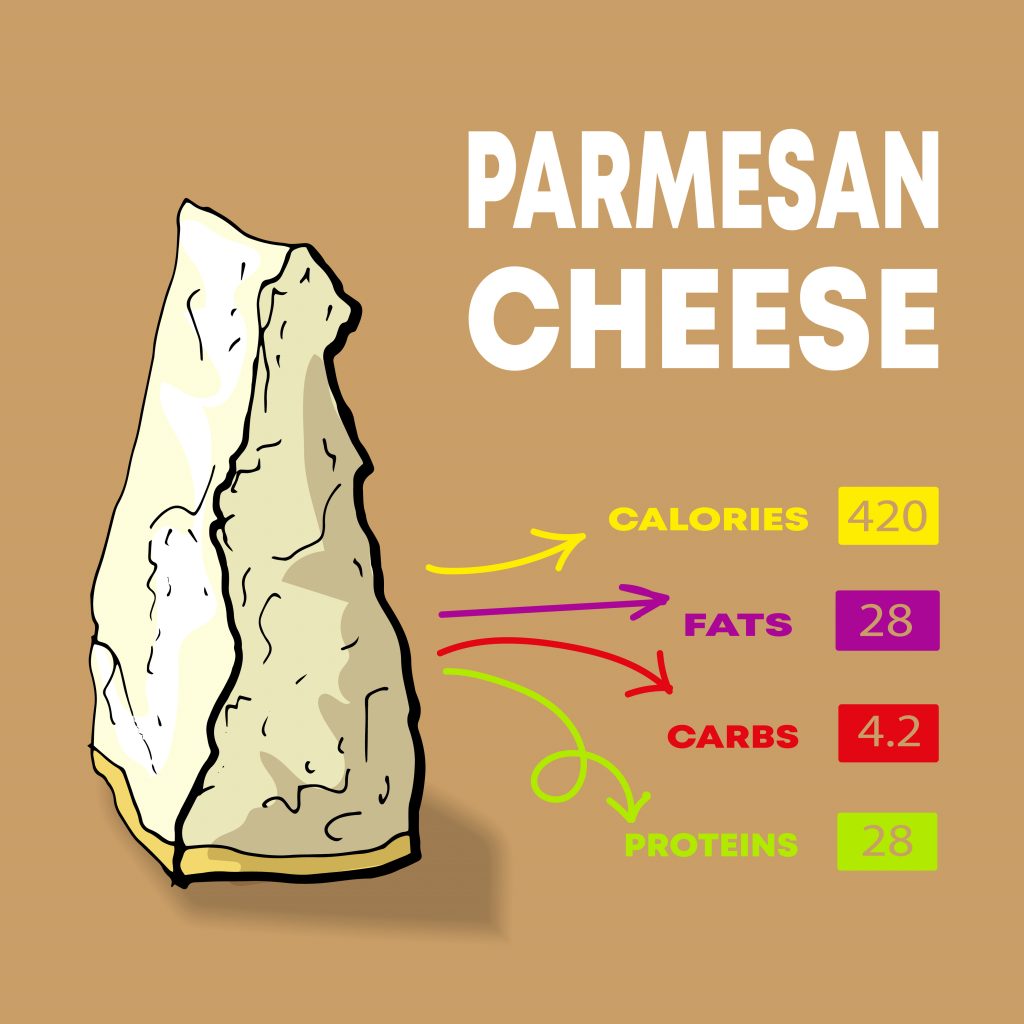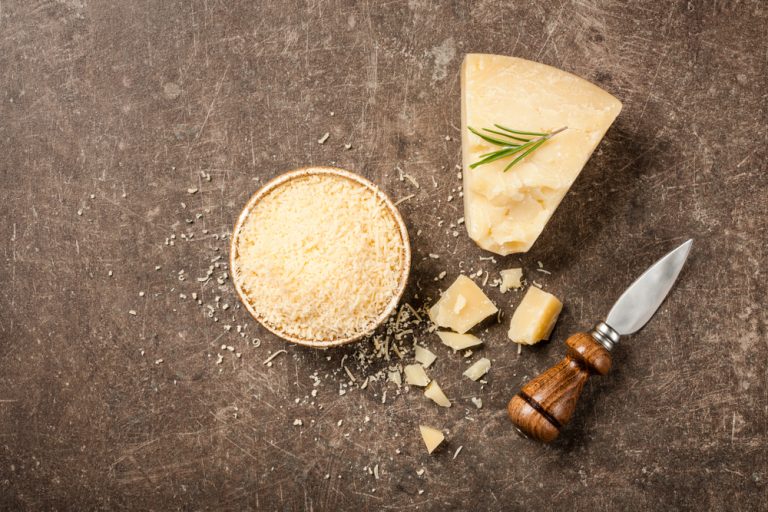Parmesan cheese is a very hard cheese obtained from cow’s milk. It is hard to imagine Italian cuisine without its characteristic flavour. Check what nutritional values parmesan cheese has, how many calories it has and what is its use in the kitchen.
Parmesan in nutshell
Parmesan, or Parmigiano Reggiano, is a rennet cheese produced in the limited geographic area of northern Italy, where it has long been used in cooking and appreciated for its nutritional value.
What does the production process of Parmesan cheese look like?
Parmesan cheese is a very hard cheese made from raw cow’s milk exclusively from Razza Regiana or Vacca Rossa cows. The milk is subjected to temperature and rennet until cheese lumps are obtained.
In the next stage, it is transferred to brines for 23 days, then it goes to the ripening room, where it remains for 1 year (we obtain a young cheese after that time), 2 years (old) or 3 years (very old cheese).
Among other things, the price of Parmesan depends on the ripening time. The shorter the parmesan cheese is matured, the lower the price.
The original Parmesan cheese has dark skin around and has information about the month of production and the producer’s identification number on it.
Parmesan cheese - nutritional and health benefits
Parmesan cheese is an excellent source of wholesome protein (35.71 g/100 g), which is a very important building and functional component in the body. It participates in the regulation of gene expression and metabolic processes, as part of enzyme systems, participates in the processes of cell immunity, and participates in oxygen transport and vision processes.

Parmesan is an easily digestible product, high in protein and calcium, with possible probiotic and prebiotic effects.
Protein also affects the physiological balance of calcium, and an adequate supply of protein is associated with the proper growth of the skeleton in children and the maintenance of bone mass in the elderly.
Parmesan is a great source of calcium (1250 mg/100 g) - 100 g of cheese covers the daily requirement for this ingredient in over one hundred per cent. Calcium participates in the development and metabolism of bones and teeth. Adequate calcium intake at a young age reduces the risk of osteoporosis later in life. In addition, calcium participates in the processes of muscle contractility and conduction of nerve stimuli. Also, it is involved in blood clotting and ensures the proper functioning of the heart.
Parmesan also contains a large amount of vitamin A responsible for proper vision, ensuring the proper condition of the skin, and protecting DNA against damage due to its anti-inflammatory properties.
Unfortunately, Parmesan is a high-sodium product (1714 mg/100 g), which contributes to an increased risk of high blood pressure, heart disease and stroke. Due to the high sodium content of Parmesan, people with heart disease and hypertension should give it up.
Parmesan cheese used in the kitchen
Parmesan cheese is characterized by a sharp, mature taste and aroma, light yellow colour and a very firm consistency.
Two-year-old Parmesan cheese is used as an addition to cold dishes, salads, spreads, as well as hot pizza, pasta dishes, tripe and omelettes. Parmesan cheese is unlikely to be served on a cheeseboard.
Immature parmesan cheese is served with wine, paired with apples or preserves, and very old parmesan with dried figs or plums and nuts.
How to store Parmesan cheese?
Parmesan cheese is best purchased in a piece wrapped in waxed paper and then in tin foil. The Parmesan cheese in the refrigerator should be in its coolest part, i.e. on the top shelf. It can stay there for up to 2 months. However, it becomes drier and harder over time.






